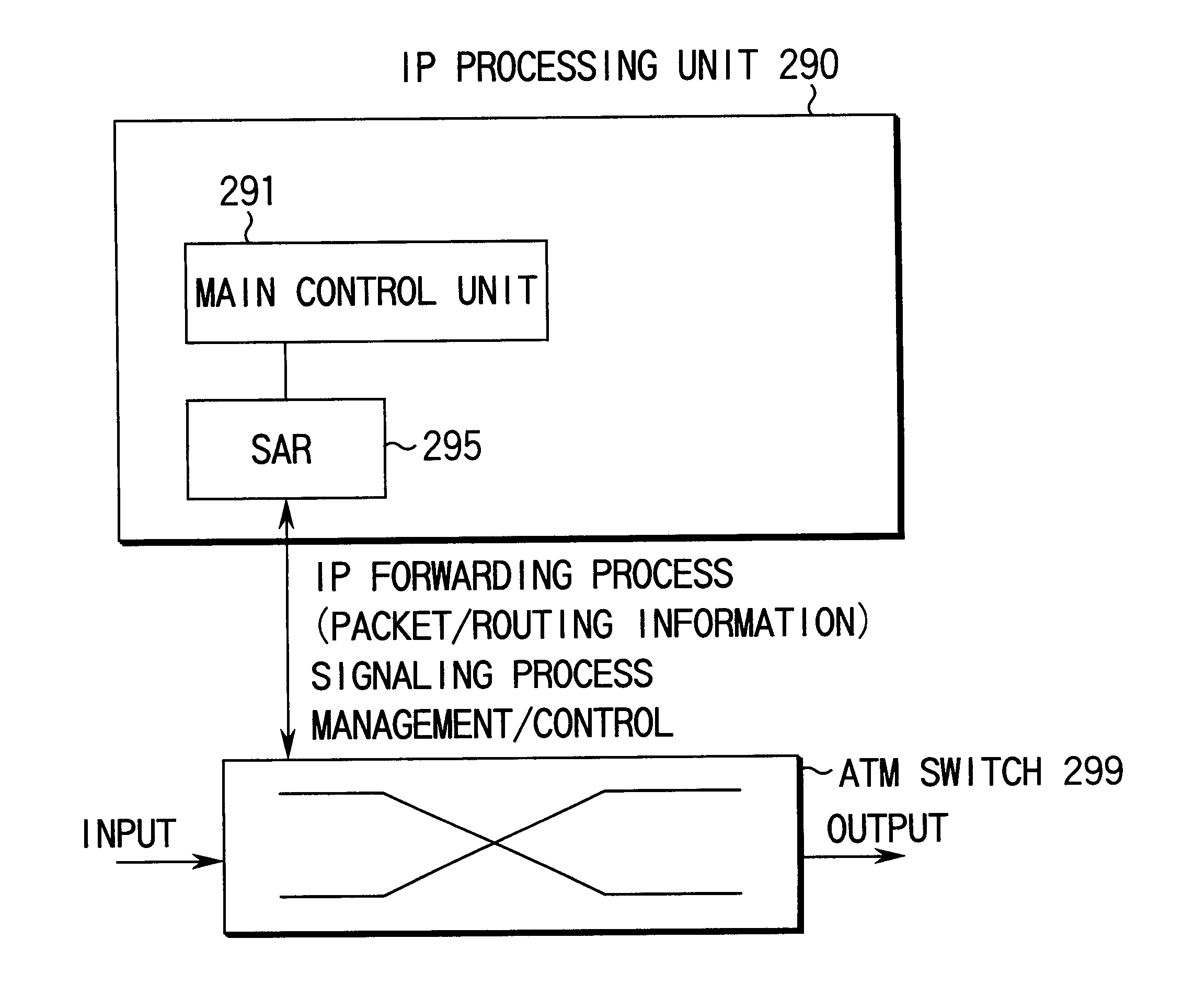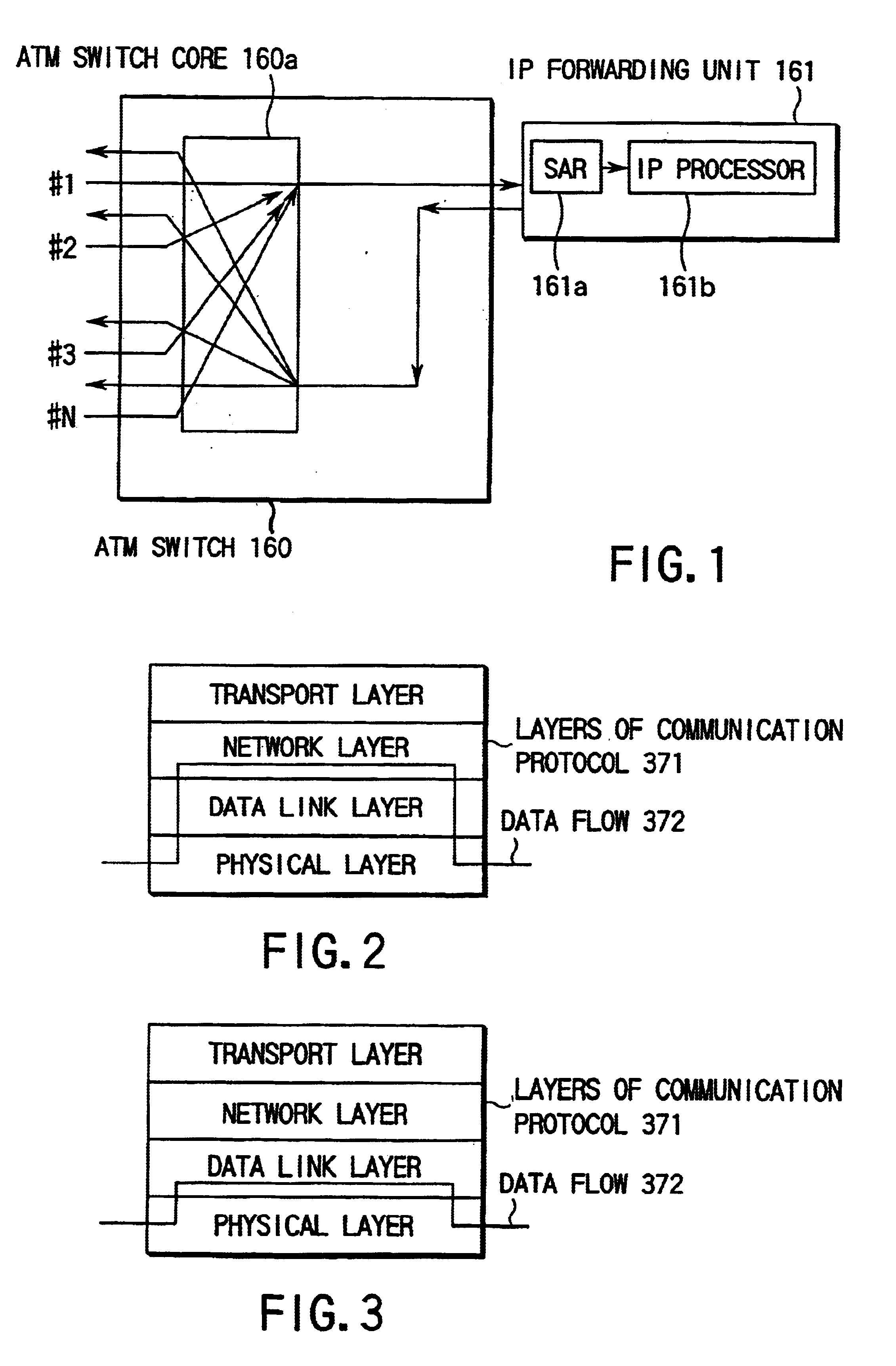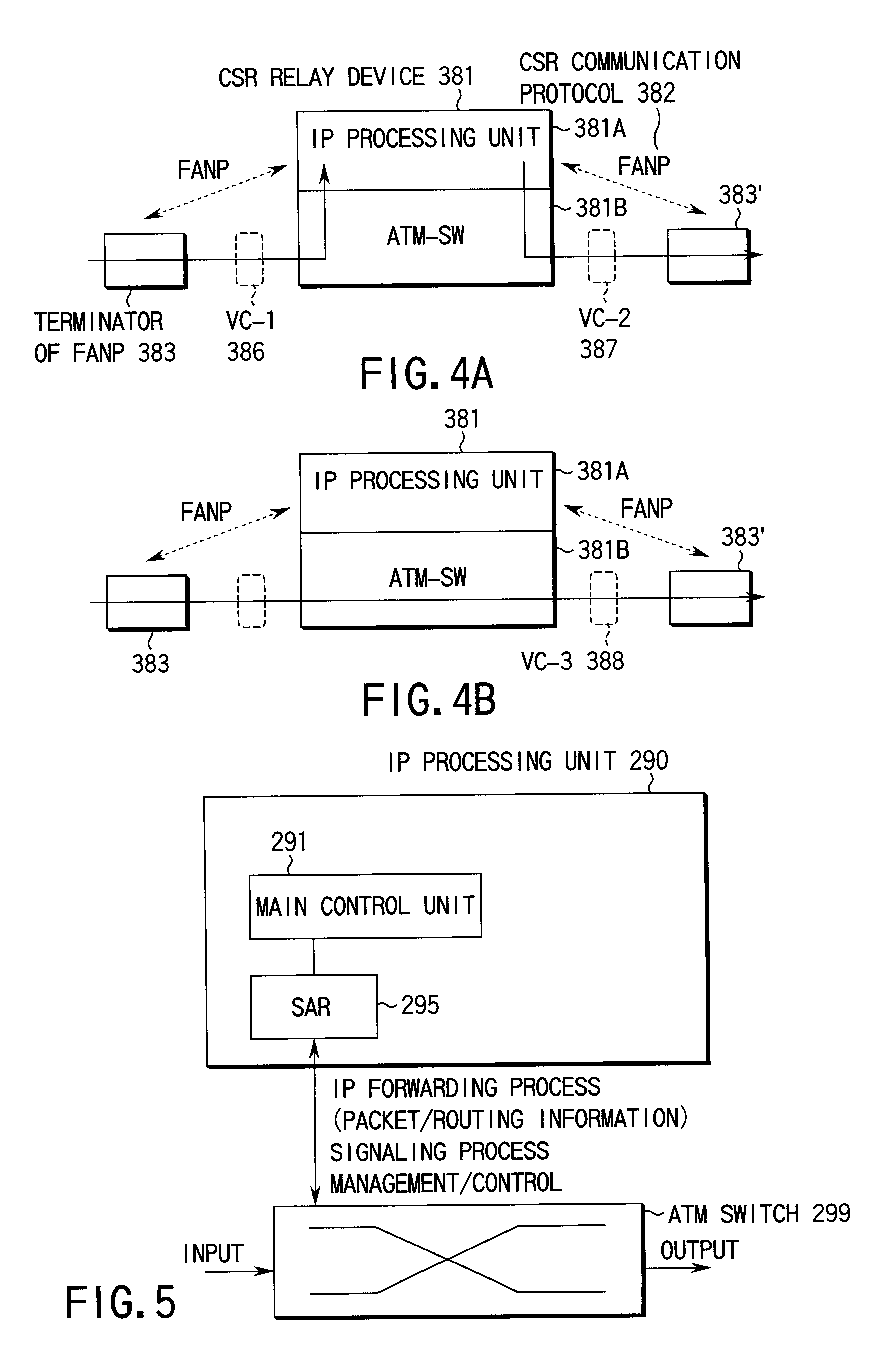Distributing ATM cells to output ports based upon destination information using ATM switch core and IP forwarding
a technology of atm switch core and destination information, applied in the direction of electrical equipment, data switching network, digital transmission, etc., can solve the problems of disturbing an increase in throughput, low processing speed of such processes, and large number of vcs required for forming cut-through paths
- Summary
- Abstract
- Description
- Claims
- Application Information
AI Technical Summary
Benefits of technology
Problems solved by technology
Method used
Image
Examples
first embodiment
The first embodiment of the present invention will be described in detail below with reference to the drawings.
FIG. 18A is a diagram showing the arrangement on the input side of an ATM relay device according to the first embodiment of the present invention. This ATM relay device comprises a mechanism for searching for a destination IP address by hardware as an IP forwarding function.
The arrangement shown in FIG. 18A is basically constructed by an ATM switch 110 and an IP forwarding unit 120 connected to the output side of the ATM switch.
The ATM switch 110 includes an ATM switch core 111 which has a plurality of input ports, and distributes cells to output queues in units of destinations (VPI / VCI) of ATM cells, and a PerVC queuing unit 112 which has VC (virtual connection) queues #1 to #N, and stores cells in queues corresponding to the respective VCs in the respective output ports.
The IP forwarding unit 120 is constructed by a plurality of IP forwarding sections #1 (120-1) to #N (12...
second embodiment
The second embodiment of the present invention will be described in detail below with reference to the drawings.
FIG. 24 is a diagram showing the arrangement of an ATM relay device according to the second embodiment of the present invention. The ATM relay device according to this embodiment comprises an IP forwarding function of forwarding IP packets hop by hop by searching for destination IP addresses.
Referring to FIG. 24, an IP processing unit 200 is connected to the output side of an ATM switch 250. The IP processing unit 200 comprises an IP forwarding processing function 202 of performing forwarding processes of IP packets such as hop-by-hop forwarding and the like, a signaling processing function 203 of setting a communication path, a management / control function 204 of managing and controlling the ATM switch 250, SARs 205, 206, and 207 which are respectively connected to the IP forwarding function 202, signaling processing function 203, and management / control function 204, and s...
third embodiment
The third embodiment of the present invention will be described in detail below with reference to the drawings.
FIG. 29 is a diagram showing the schematic arrangement of a CSR relay device to which an ATM relay device according to the third embodiment of the present invention is applied. In the arrangement of this embodiment, an ATM switch 342 is connected to an IP processing unit 361 via a link 363 with IP processing for signaling and also via a link 344 with IP processing for forwarding, which is physically different from the link 363 with IP processing for signaling. That is, a path for forwarding processing (in this case, hop-by-hop forwarding) is physically different from that for signaling processing.
More specifically, the ATM switch 342 is connected to a cell / data unit segmentation and reassembly unit (to be referred to as a signaling SAR hereinafter) 362 via a signaling cell route 346, and the signaling SAR 362 is connected to a software processing unit 352 including a CPU vi...
PUM
 Login to View More
Login to View More Abstract
Description
Claims
Application Information
 Login to View More
Login to View More - R&D
- Intellectual Property
- Life Sciences
- Materials
- Tech Scout
- Unparalleled Data Quality
- Higher Quality Content
- 60% Fewer Hallucinations
Browse by: Latest US Patents, China's latest patents, Technical Efficacy Thesaurus, Application Domain, Technology Topic, Popular Technical Reports.
© 2025 PatSnap. All rights reserved.Legal|Privacy policy|Modern Slavery Act Transparency Statement|Sitemap|About US| Contact US: help@patsnap.com



